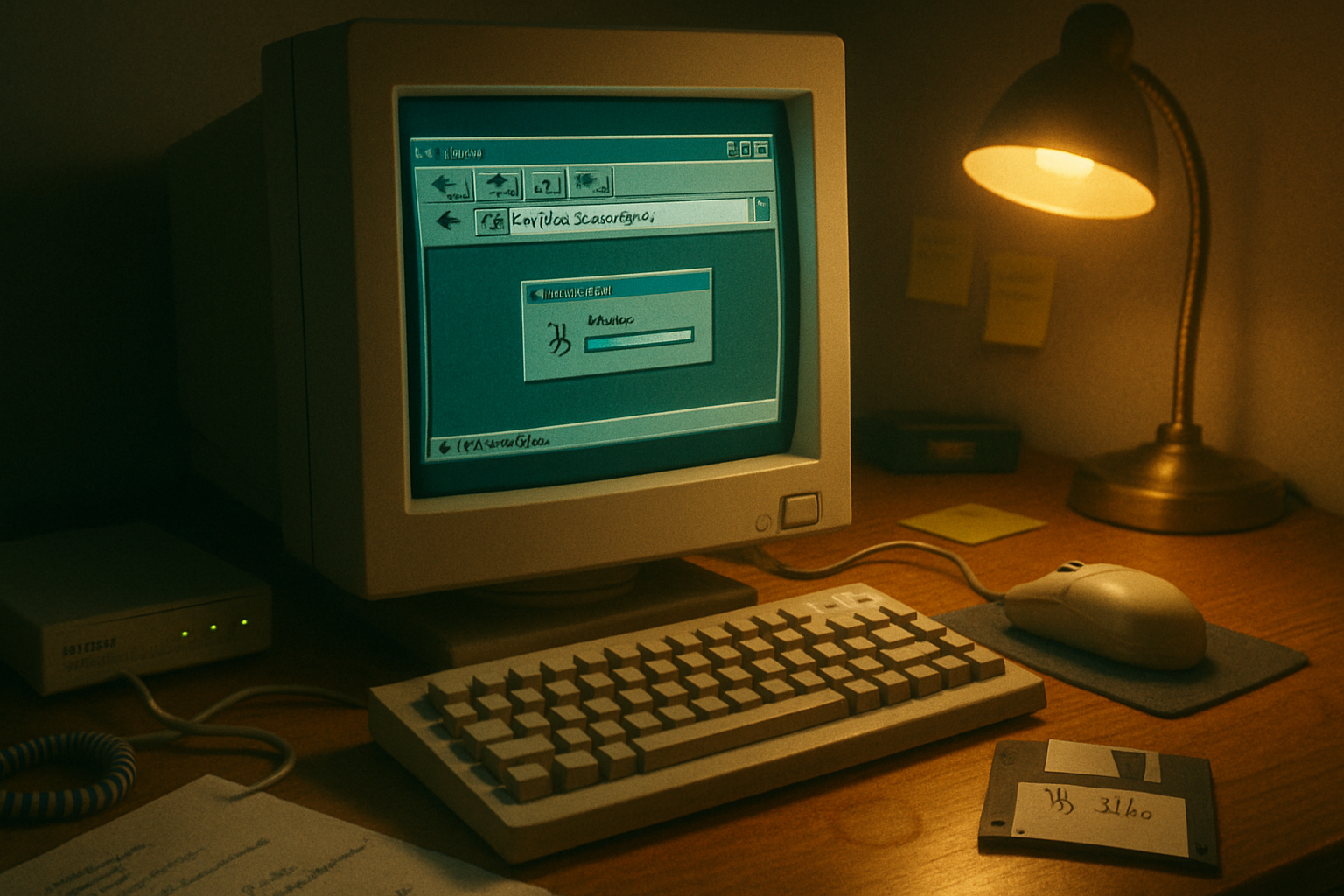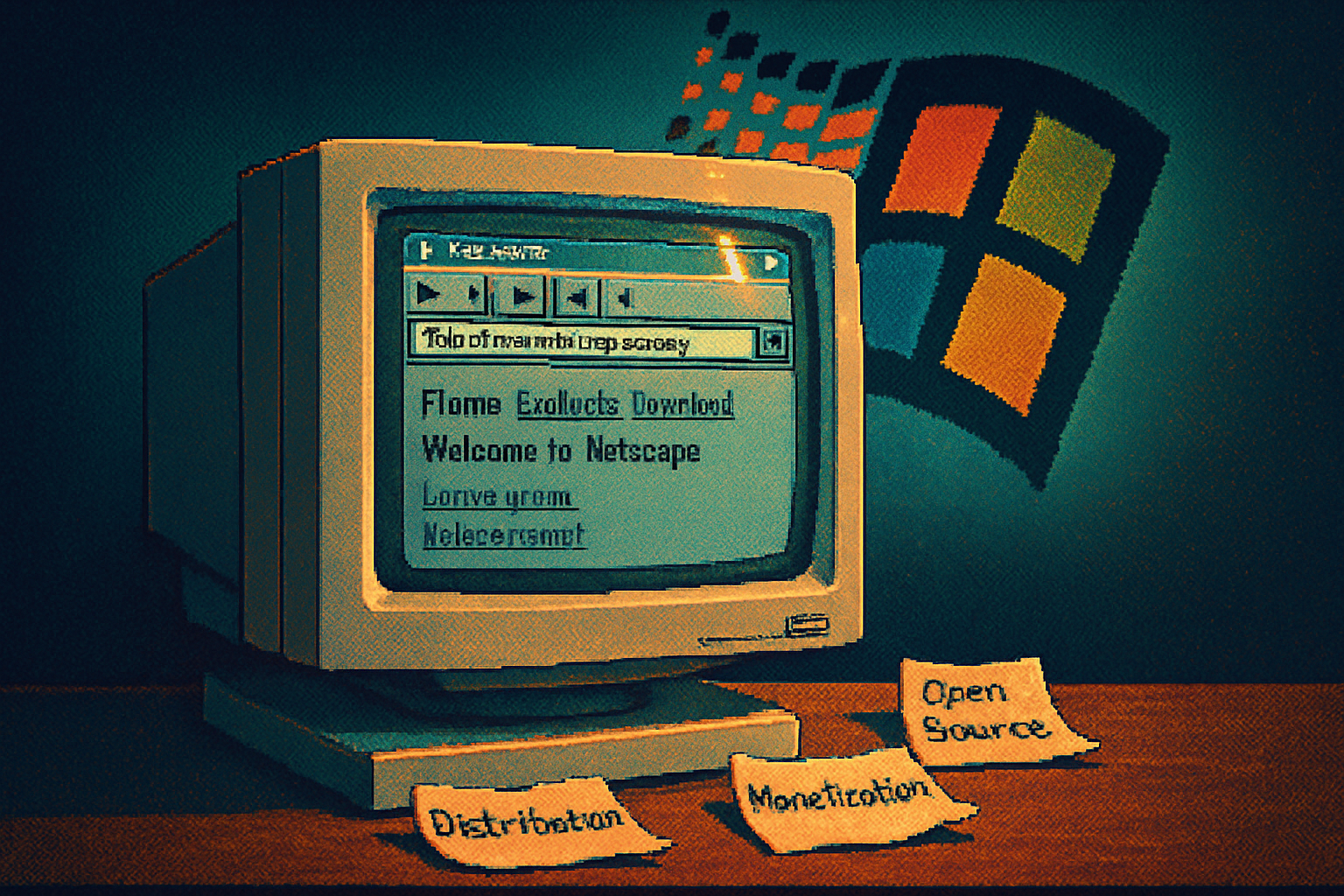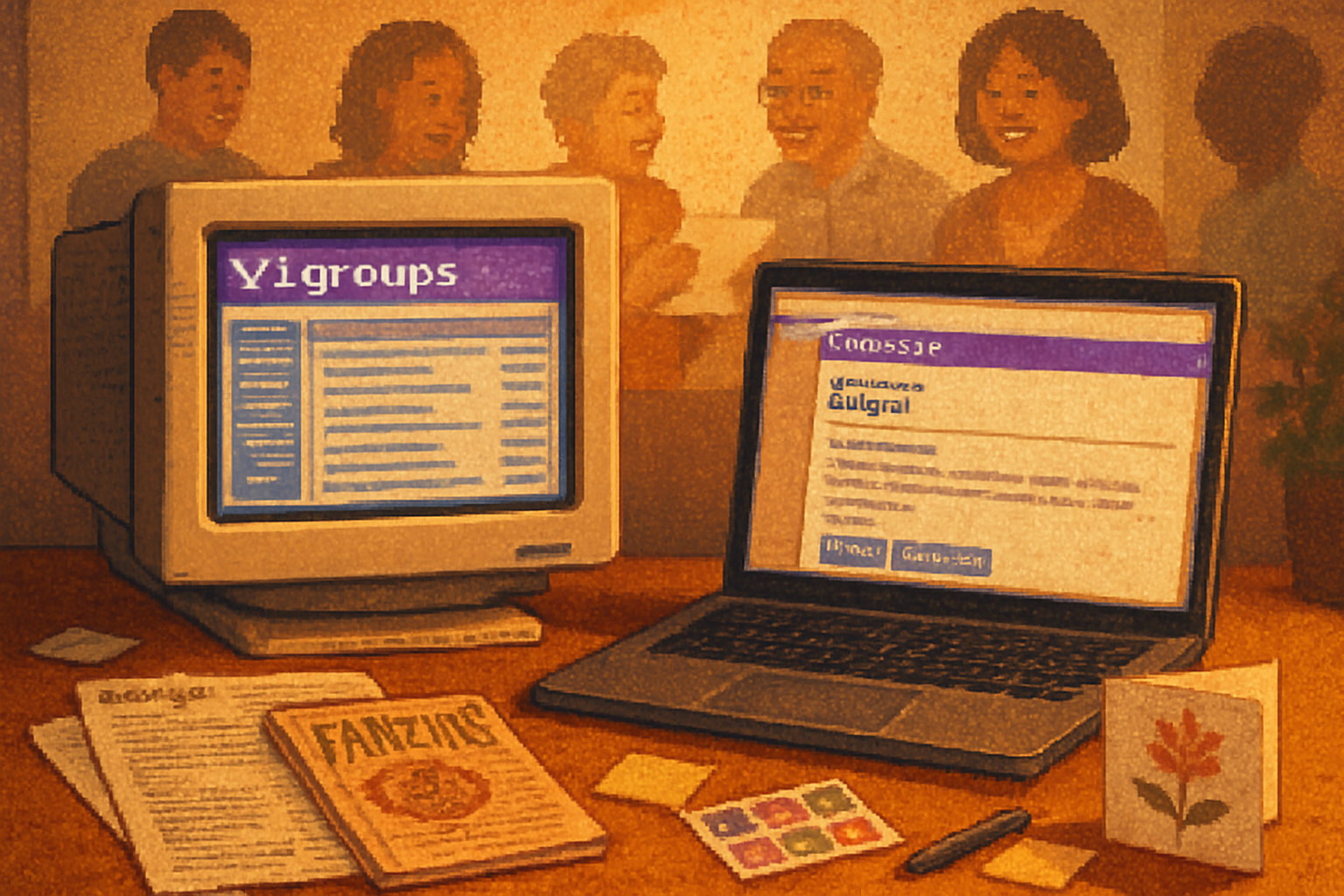· retrotech · 6 min read
Revisiting Netscape Navigator: The Browser That Shaped the Internet
Netscape Navigator didn't just surf the web - it built the surfboard. This essay traces how Netscape shaped web technologies, standards and culture, drawing on contemporary reporting, oral histories and recollections from engineers and early users.

I remember the hiss of a dial‑up modem, a fluorescent cursor, and then - slow as molasses but unmistakably miraculous - a rudimentary page rendered by Netscape Navigator. For a lot of us, that first page felt less like an application and more like discovery itself: the internet made clickable, navigable, and oddly human.
This is the story of Netscape Navigator - not a nostalgic puffball, but an account of how a scrappy browser and the people behind it rewired the web’s technology, standards and business logic.
How Netscape arrived (and why anyone should care)
In late 1994, a handful of people who had worked on Mosaic split off to start Mosaic Communications, soon renamed Netscape Communications. Mosaic had shown the way; Netscape made the path a highway. The company released Navigator into a wildly receptive world and its growth was catalytic:
- It turned the web from an academic curiosity into a consumer product.
- It introduced client‑side technologies and deployment habits that still define the web.
- It provoked Microsoft so ferociously the resulting browser war reshaped antitrust and platform strategy for a decade.
If the web is public infrastructure now, Netscape was one of the first heavy machines to lay down the pavement.
Sources for the basic timeline: the Netscape page at Wikipedia and the Computer History Museum’s oral histories provide good chronology and context.12
What Netscape actually contributed - the short list
Netscape shipped not only a browser but a toolkit of techniques and expectations. Key contributions:
- JavaScript - invented at Netscape (Brendan Eich, 1995) to give pages interactivity, quickly becoming the lingua franca for client‑side behavior. See MDN’s JavaScript history.
- SSL - Netscape developed the original Secure Sockets Layer to secure web traffic, the ancestor of TLS and modern HTTPS.
- Cookies - Netscape implemented HTTP cookies to enable stateful sessions across stateless HTTP requests, enabling shopping carts, logins and personalization.
- Plugins & embedded media - Netscape popularized in‑browser plugins (NPAPI), which let the web host audio, video, Java and other content before native standards matured.
- Market and culture - the consumer‑facing browser made the web visible, familiar and clickable - and it set expectations for ‘what a browser does’.
These technical moves were not neutral: they shaped security models, site architectures, and the ways companies monetized the web.
Voices from the trenches (what engineers and early users remember)
There are dozens of published oral histories, interviews, and memoirs from Netscape alumni and early web users. A few recurring recollections - distilled from those sources and contemporary reporting - tell the human story.
Engineers remember a breakneck pace - features were speculated, prototyped, and deployed in weeks. That speed created innovation (JavaScript, SSL) but also brittle implementations that later required painful standardization.
Former product folks recall the IPO in 1995 as a surreal inflection point - suddenly tiny decisions had market consequences. The 1995 IPO fed a culture of hypergrowth and attention that attracted both capital and competitors.
Early users talk about discovery and social vertigo - they learned to trust links, bookmarks and the address bar as new ways to carry identity and memory online. For many, Netscape was the first software that made the web feel domesticated.
If you want direct testimony, the Computer History Museum and contemporary reporting capture many first‑hand accounts.23
The browser war: Microsoft, monopoly and messy outcomes
Netscape’s success drew a very large, well‑armed opponent: Microsoft. Bundling Internet Explorer into Windows undermined Netscape’s distribution model and led to a watershed antitrust battle in the late 1990s. The legal struggle wasn’t abstract; it determined whether browsers were independent platforms or just features of an operating system.
Result: Netscape faltered as Microsoft leveraged platform advantage, but the legal and public pushback also helped clarify platform‑vendor responsibilities and the importance of open standards.
For a deep read on the political and legal fallout, contemporary reporting and later analyses track the back‑and‑forth.4
What Netscape got right - and what it got wrong
Right:
- Prioritizing the consumer experience. Netscape made the web clickable and immediate.
- Fast experimentation. Rapid shipping seeded the web with practical tools (JS, cookies, SSL) rather than waiting for slow committees.
- Seeding an ecosystem. By establishing expectations (bookmarks, cookies, in‑browser media), Netscape lowered the barrier for sites and services.
Wrong or short‑sighted:
- Security and extensibility tradeoffs. Speed meant early implementations were sometimes insecure or proprietary; plugin architectures and early cookie models had long‑tail security consequences.
- Business model fragility. Netscape monetized poorly and was vulnerable to Windows bundling; product excellence didn’t guarantee sustainable distribution strategy.
- Standards lag. Implementing features fast was a virtue until cross‑browser compatibility became critical; the industry spent years cleaning up inconsistent implementations.
The open‑source epilogue: Mozilla, Firefox and the long tail
In 1998, Netscape made a radical move: open‑sourcing its browser platform, which seeded the Mozilla project and - after a long, complicated gestation - Firefox. That open release stands as perhaps Netscape’s most enduring institutional contribution: it changed how browsers were developed and introduced a model where community development could wrest control back from single vendors.
Mozilla’s efforts also pressured vendors toward standards compliance, and the idea that a browser could be a community project rather than purely a corporate product is part of Netscape’s legacy.
See Mozilla’s own accounts of the open‑sourcing decision for more detail.5
The technical inheritance: what still runs on Netscape’s shoulders
- JavaScript - still the dominant client language; an entire app ecosystem grew around it.
- HTTPS - SSL → TLS is now the baseline for web security.
- Session models - cookies evolved into more secure and privacy‑aware techniques, but the initial idea of stateful web interactions came from that early era.
- Browser as platform - Netscape helped normalize the browser as a first‑class application platform rather than an adjunct to the OS.
A short, sardonic moral
Netscape was brilliant, too fast, and a little naive - which is another way of saying it did what great pioneers do: it exposed how the world could be different before the lawyers, platform monopolies and standards committees finessed the details. If innovation is oxygen, Netscape was the spark.
Further reading and primary sources
- Netscape (Wikipedia): https://en.wikipedia.org/wiki/Netscape
- Computer History Museum - web and browser oral histories: https://computerhistory.org/
- MDN Web Docs - History of JavaScript: https://developer.mozilla.org/en-US/docs/Web/JavaScript/History
- Secure Sockets Layer (SSL) (Wikipedia): https://en.wikipedia.org/wiki/Secure_Sockets_Layer
- Contemporary reporting on the Netscape IPO and the browser war appear in major outlets from 1995–2000 (The New York Times, Wired, and others). A compact retrospective is available on the Mozilla blog and in multiple oral history recordings.5
Footnotes
See general history at Netscape’s Wikipedia entry for a concise timeline. ↩
The Computer History Museum hosts oral histories and artifacts relating to the early web and Netscape engineers. ↩ ↩2
Contemporary interviews with Netscape staff in periodicals like Wired and archived news reporting capture the culture and decision points. ↩
Reporting and legal summaries of the Microsoft antitrust case document how the browser war became a legal watershed. ↩
Mozilla’s retellings of its origin story document Netscape’s open‑source decision and the creation of the Mozilla project. ↩ ↩2



